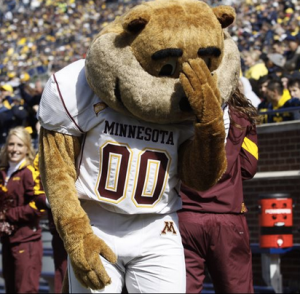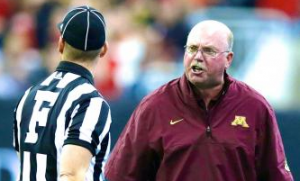 In the wake of University of Minnesota Athletic Director Norwood Teague’s resignation due to sexual harassment of University employees, the University’s PR team is getting glowing marks for the work they did on crisis communications management.
In the wake of University of Minnesota Athletic Director Norwood Teague’s resignation due to sexual harassment of University employees, the University’s PR team is getting glowing marks for the work they did on crisis communications management.
Public relations firefighters tend to get too much credit when things go well, and too much blame when things go poorly. The truth is, with any crisis there are many uncontrollable factors in play that aid or cripple even the most talented PR pros.
First They Got Lucky
The University’s PR people did plenty of things well, but they also got extremely lucky. For instance, the harassed employees didn’t go directly to the media before the University had a chance to discover exactly what had happened, disclose, apologize and force a resignation. If the victims had told their stories a little bit at a time to the media and blindsided the University, there would have been a steady stream of stories in which the University would have looked clueless, hapless, defensive and unresponsive to the victims.
The University was also fortunate that they had clear evidence of wrong-doing available – very graphic text messages. This immediately gave the University the ability to swiftly secure a resignation before facing media scrutiny. Without that evidence, the University could have faced a prolonged “he said, she said” battle on the front pages, with no firm evidence available to help University leaders bring swift closure to the University, and justice to the victims (see Clarence Thomas).
Then They Did Good Work
Having said all that, the University public relations team did seem to do many things very skillfully.
Disclosure to Closure In One Day. Unless there are more disclosures coming, the PR team seems to have dumped all of the evidence in one day. Mr. Teague has confessed, disclosed, apologized and resigned in one fell swoop. They may be pretty close to having full disclosure and closure on the same day, which is a rarity in the world of crisis communications.
This should help the University limit the number of days this horrendous story has legs. The only thing worse than a reputation-damaging story is multiple days of reputation-damaging stories, and this PR team did what they could to ensure this didn’t become a long-running soap opera.
Friday News Dump. This PR team also got the story out on a Friday. This is an tried and true crisis communications move, and it makes sense. Disclosing it on Friday, puts much of the bad news into Friday night and Saturday, when news consumption is lowest and the public is distracted for a couple of days, especially during Minnesota’s scarce summer days.
No Victim-Blaming. Importantly, the University didn’t directly or indirectly blame the victims. In the coverage I saw, there was no partially defending Teague by mentioning that the abused employees did something to somehow encourage Teague. While this may seem like an obvious thing to avoid, many make this mistake.
No Hiding. Finally, they didn’t stay in the bunker. A lot of proud, stubborn, and arrogant leaders refuse to talk to the media when under siege. That didn’t happen in this case. Mr. Teague spoke. University President Eric Kaler spoke. There were no hands in cameras and no stories reporting that University officials “refused to comment,” which so often makes institutions and people appear to be defensive, secretive, bumbling and guilty.
The one part of the Friday news coverage that didn’t pass the smell test was Mr. Teague seemingly blaming all of his behavior on alcohol abuse. Teague may very well need help with alcoholism, but he also needs help learning how to respect women who clearly and repeatedly send signals that they aren’t interested. But I assume that the University public relations team can’t be blamed for that bit of weasel-speak, because I imagine Mr. Teague wrote his own statement, or at least heavily edited it.
While the University public relations team got very lucky on some big things, their handling of this crisis turned what could have been weeks of really horrible stories into fewer days of horrible stories. In crisis communications, that’s often as good as it gets.

